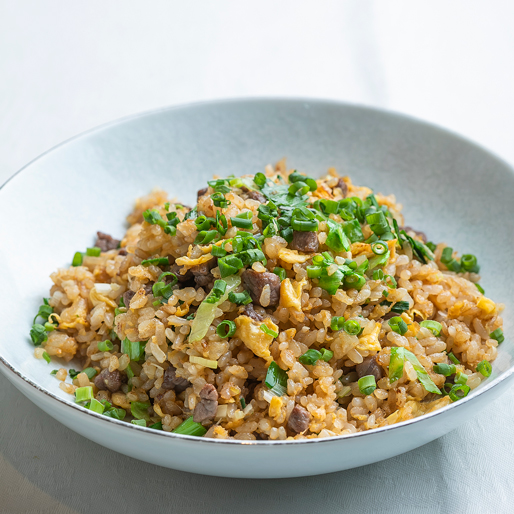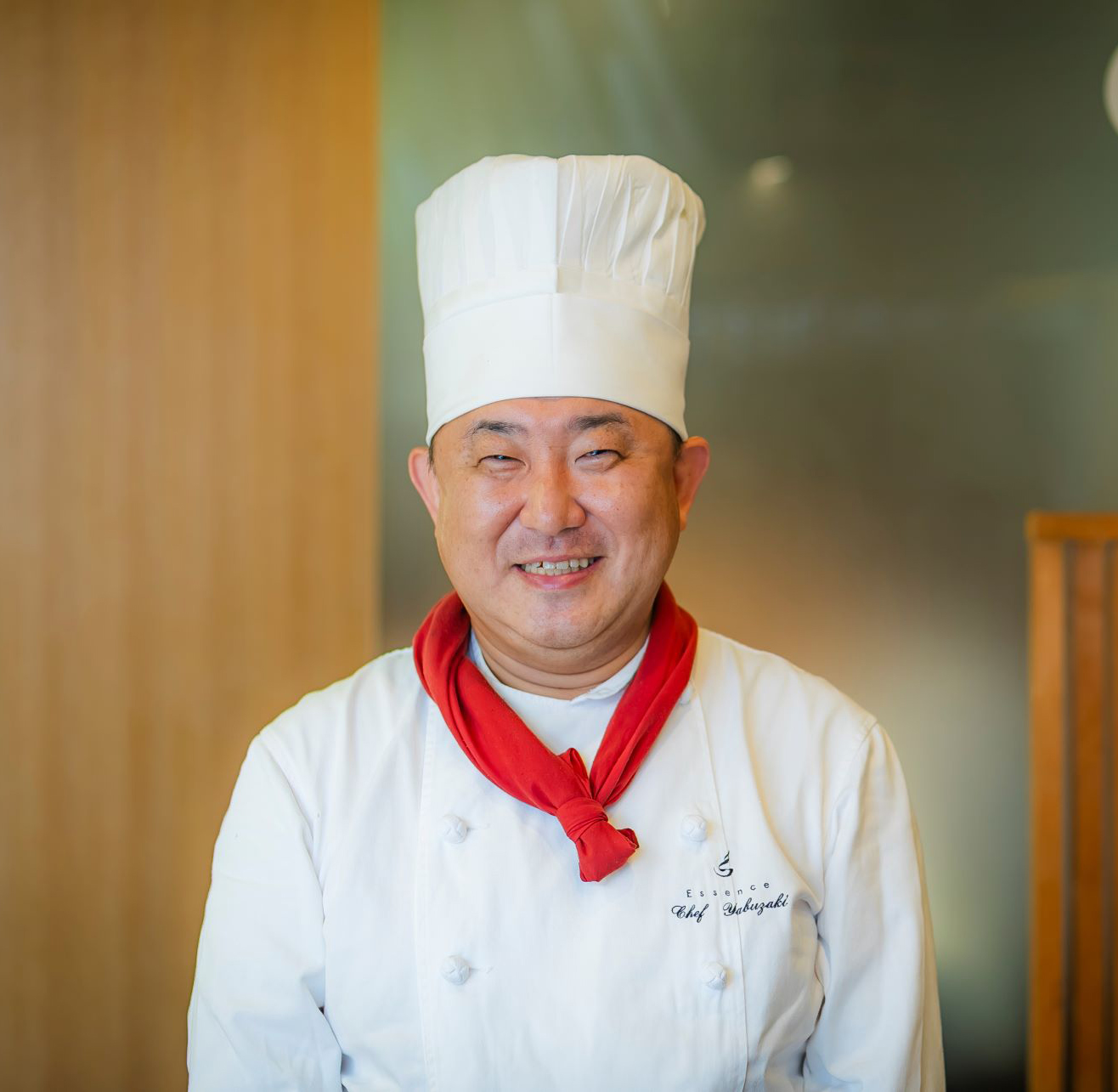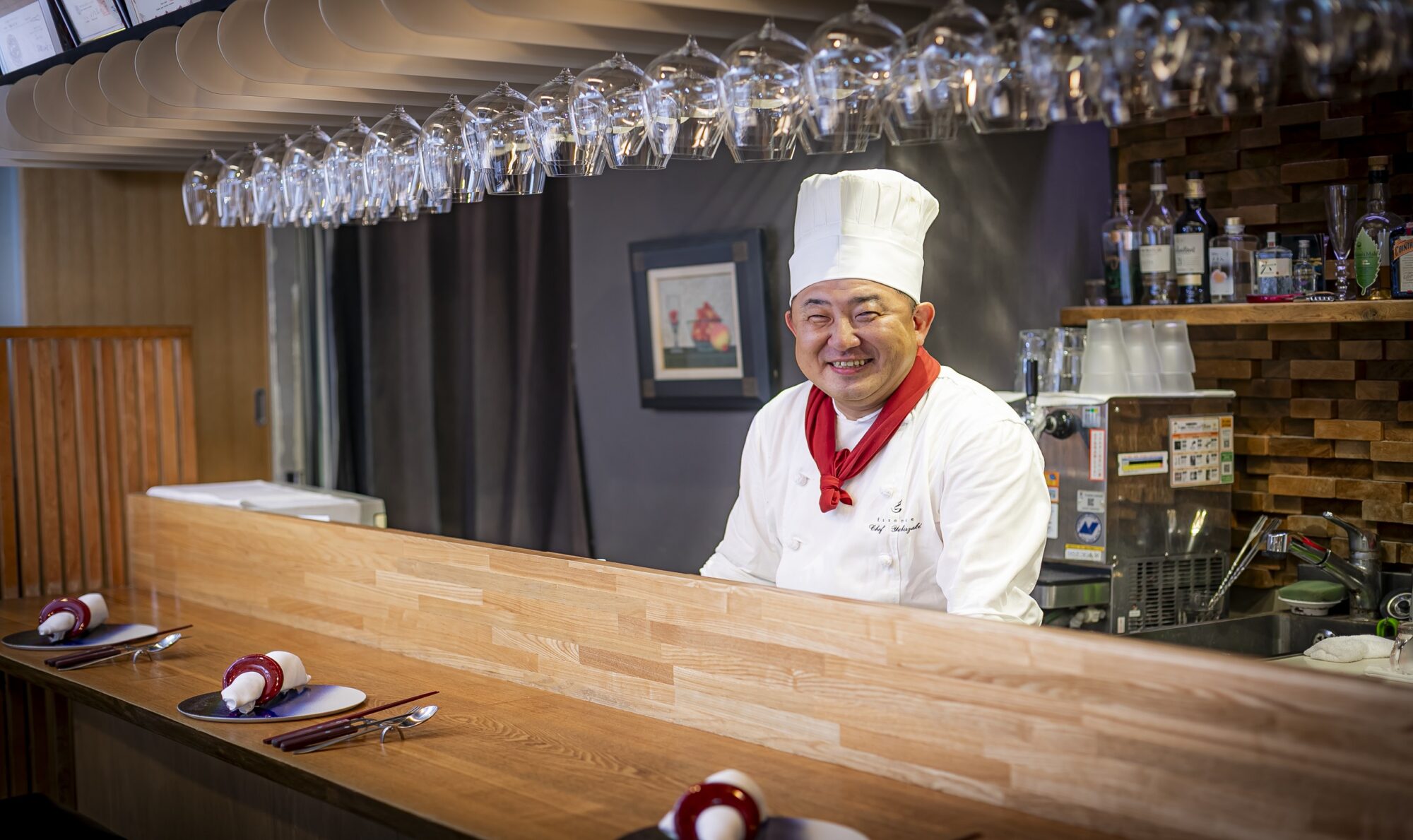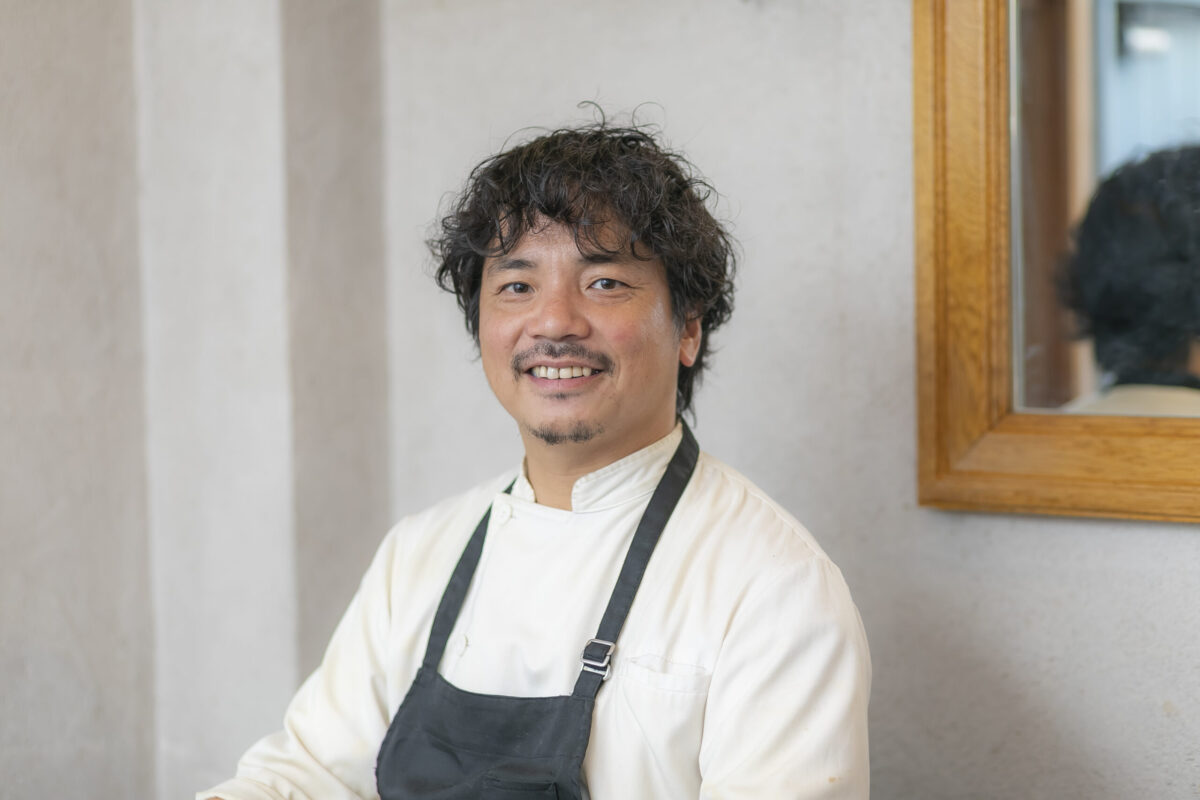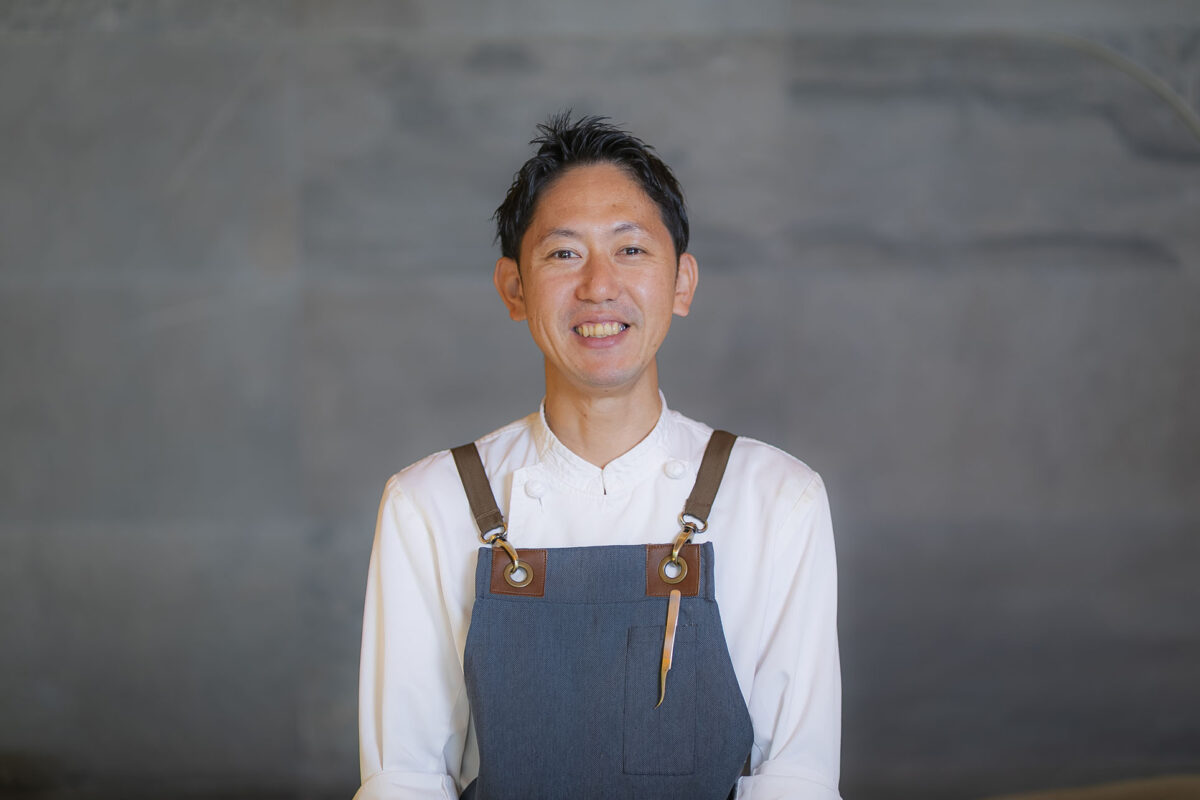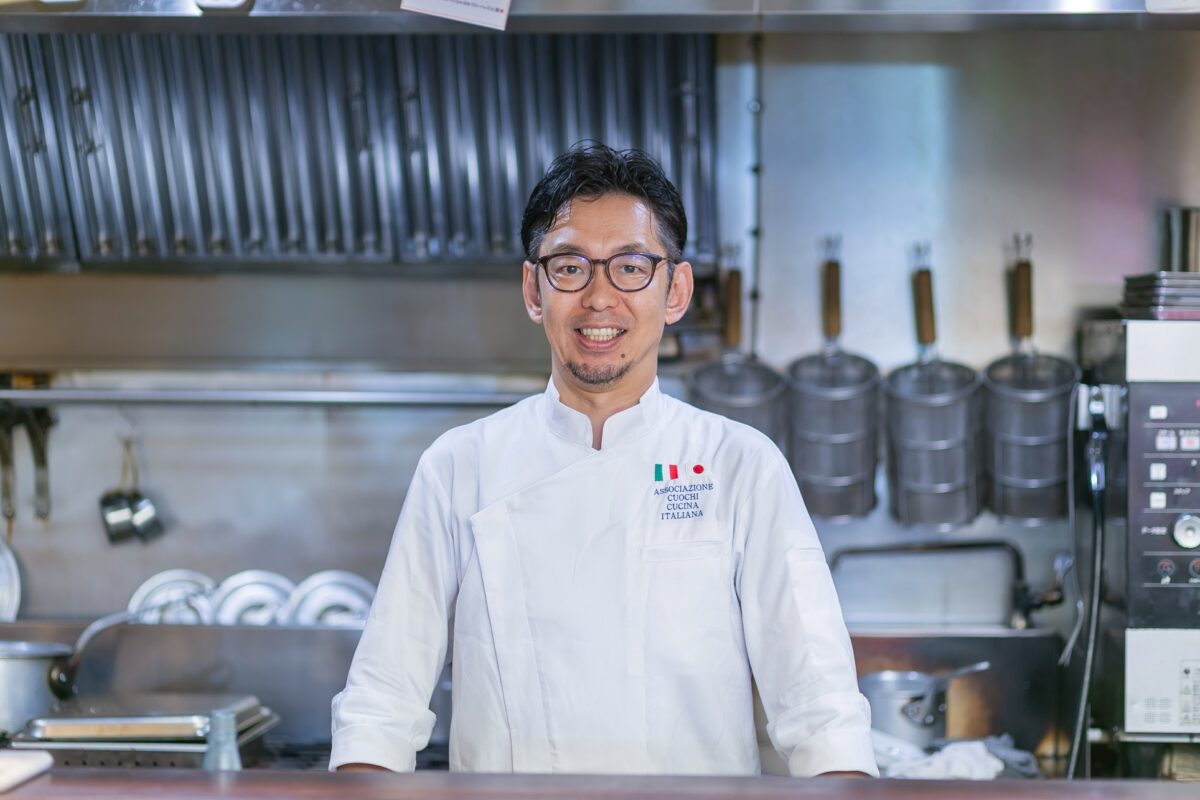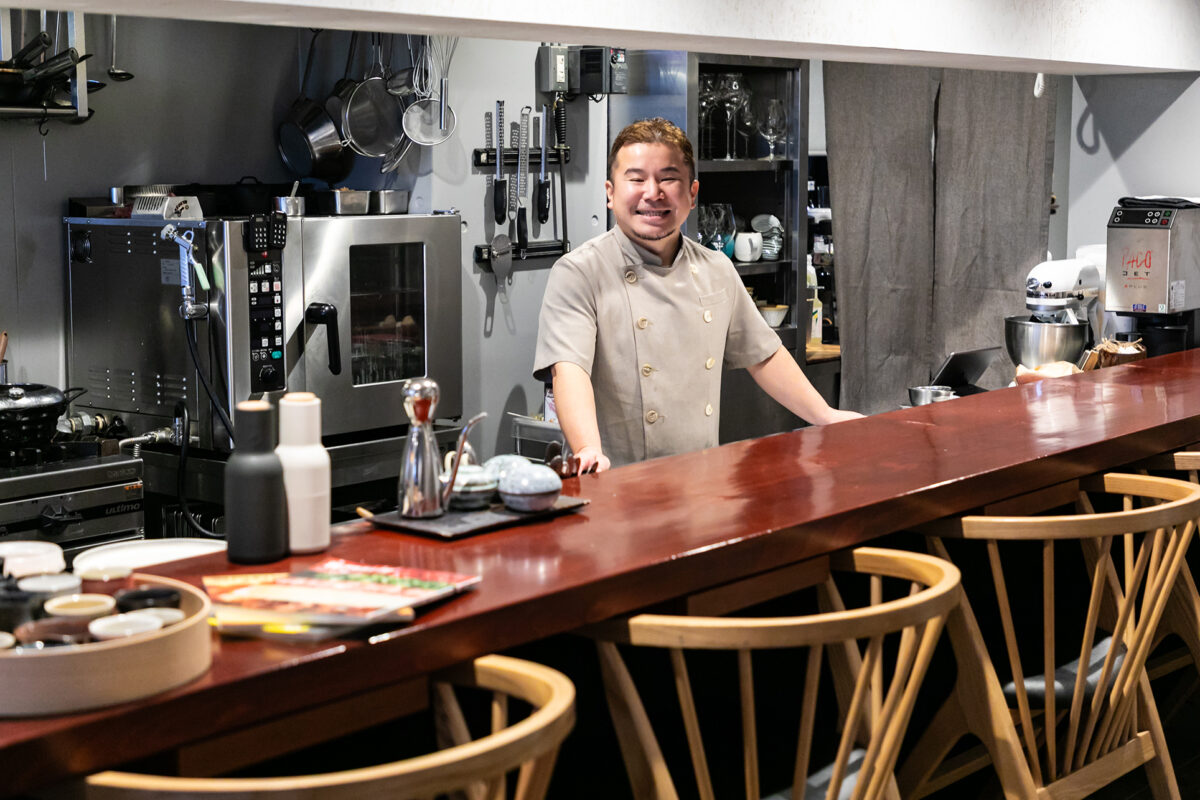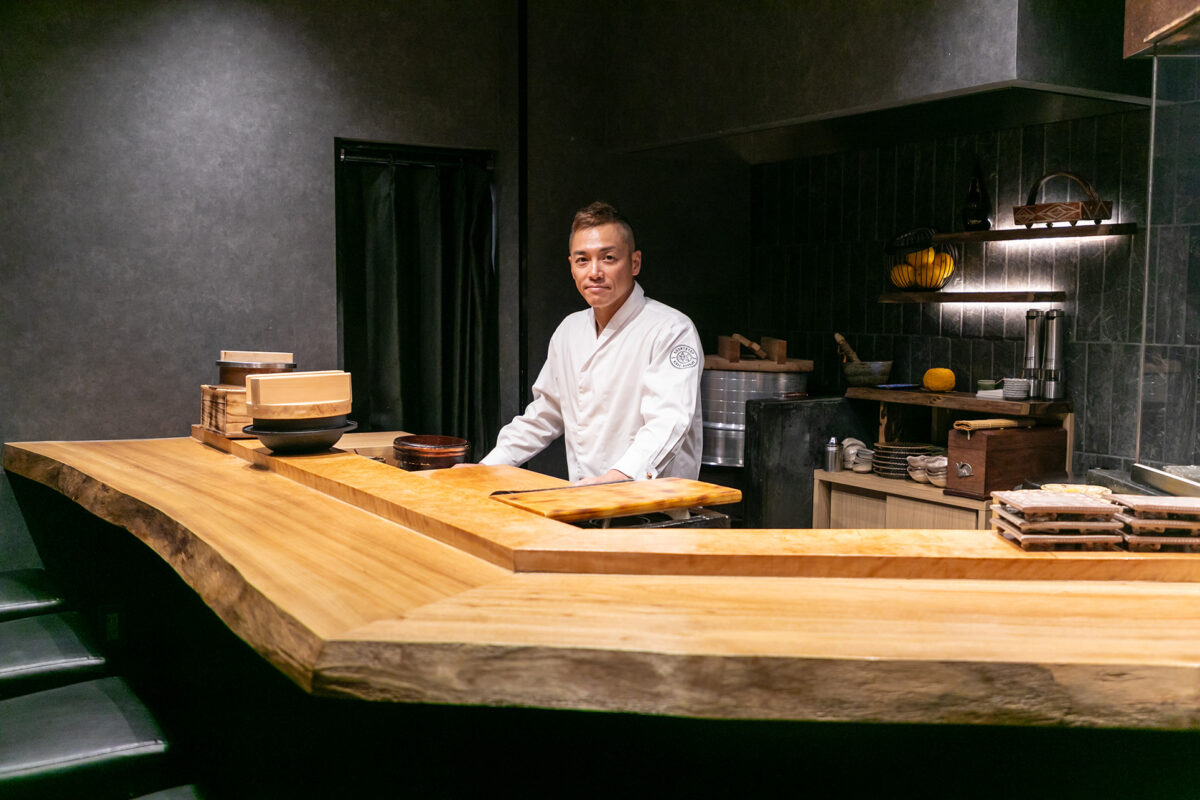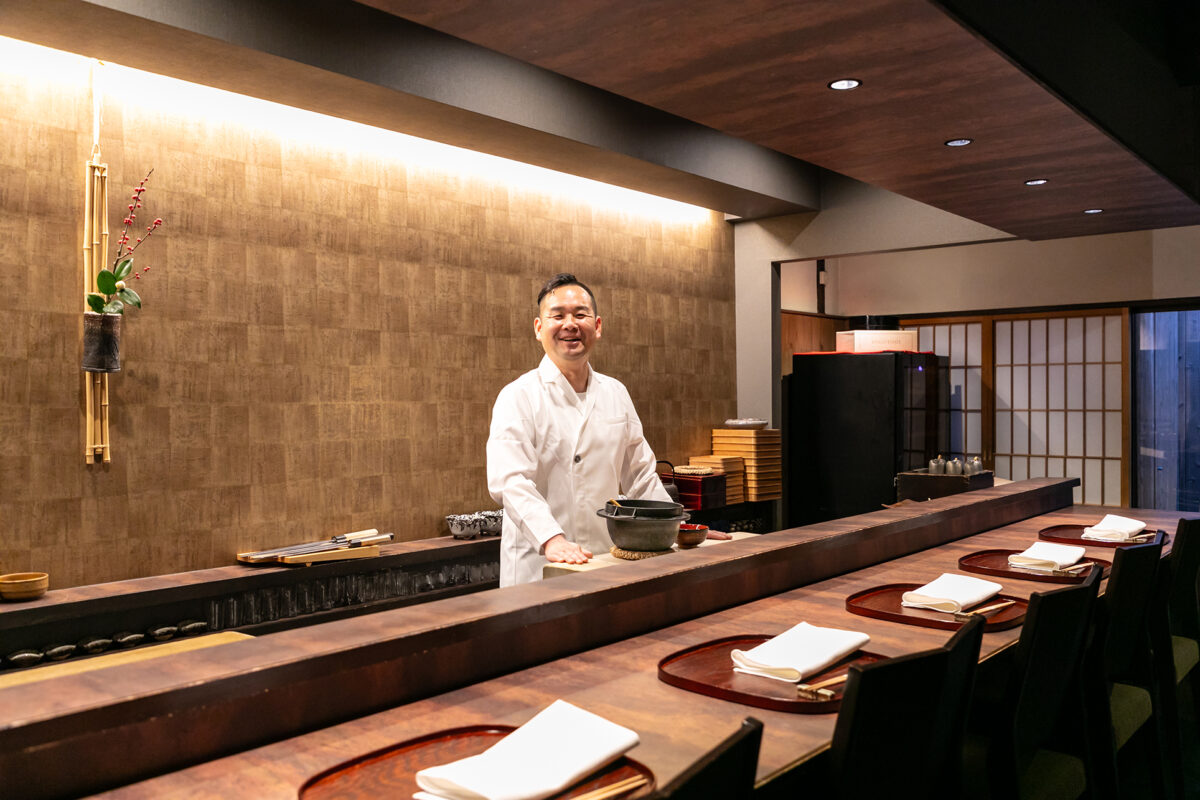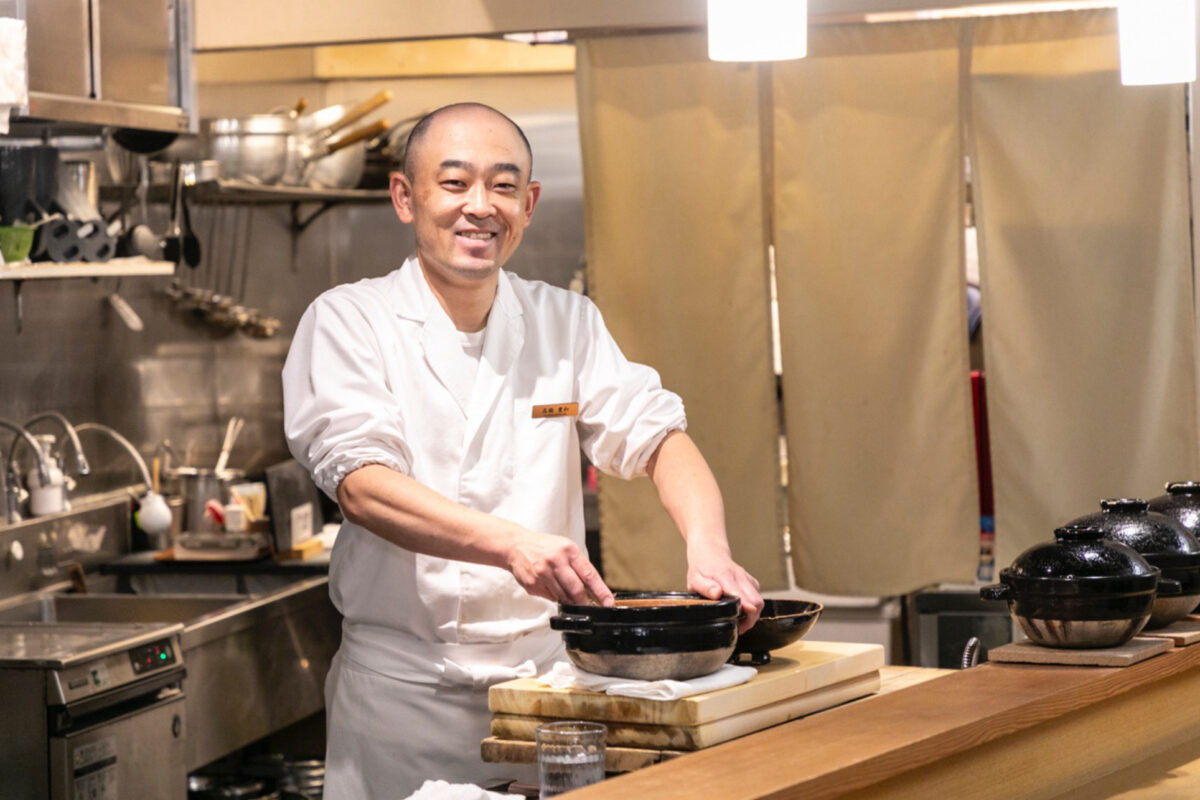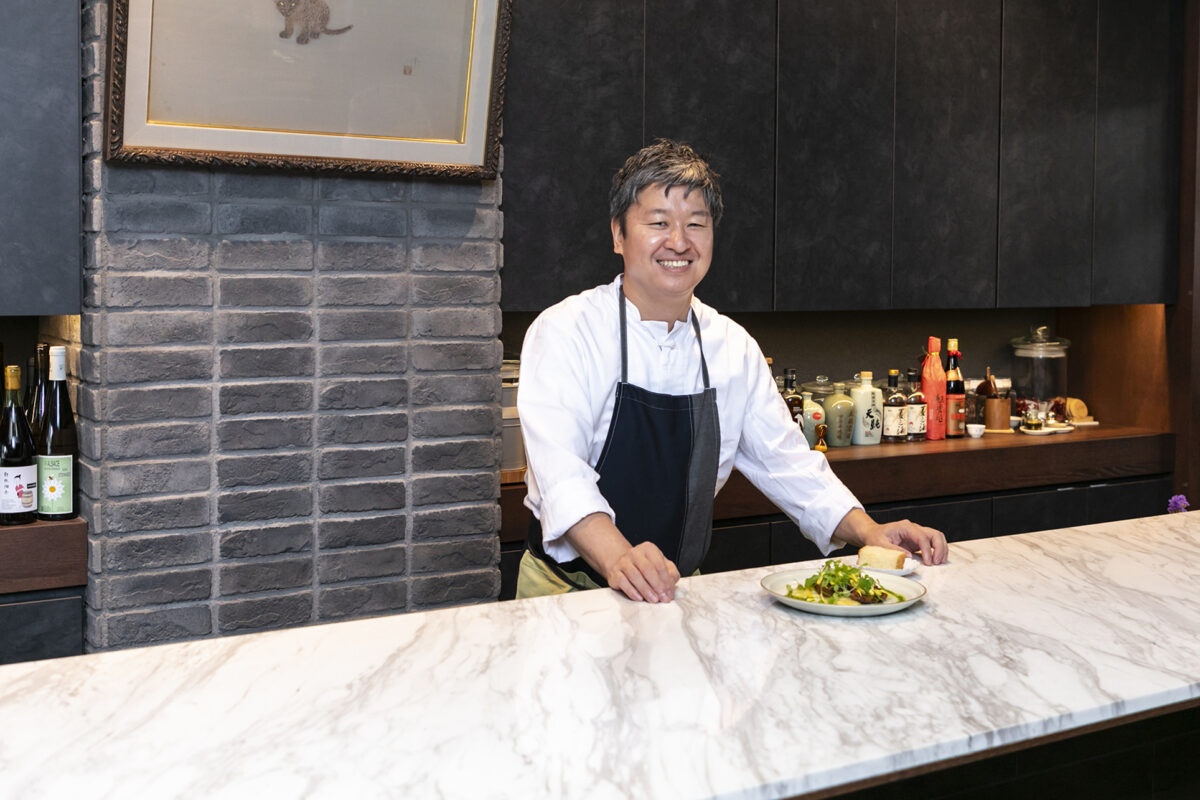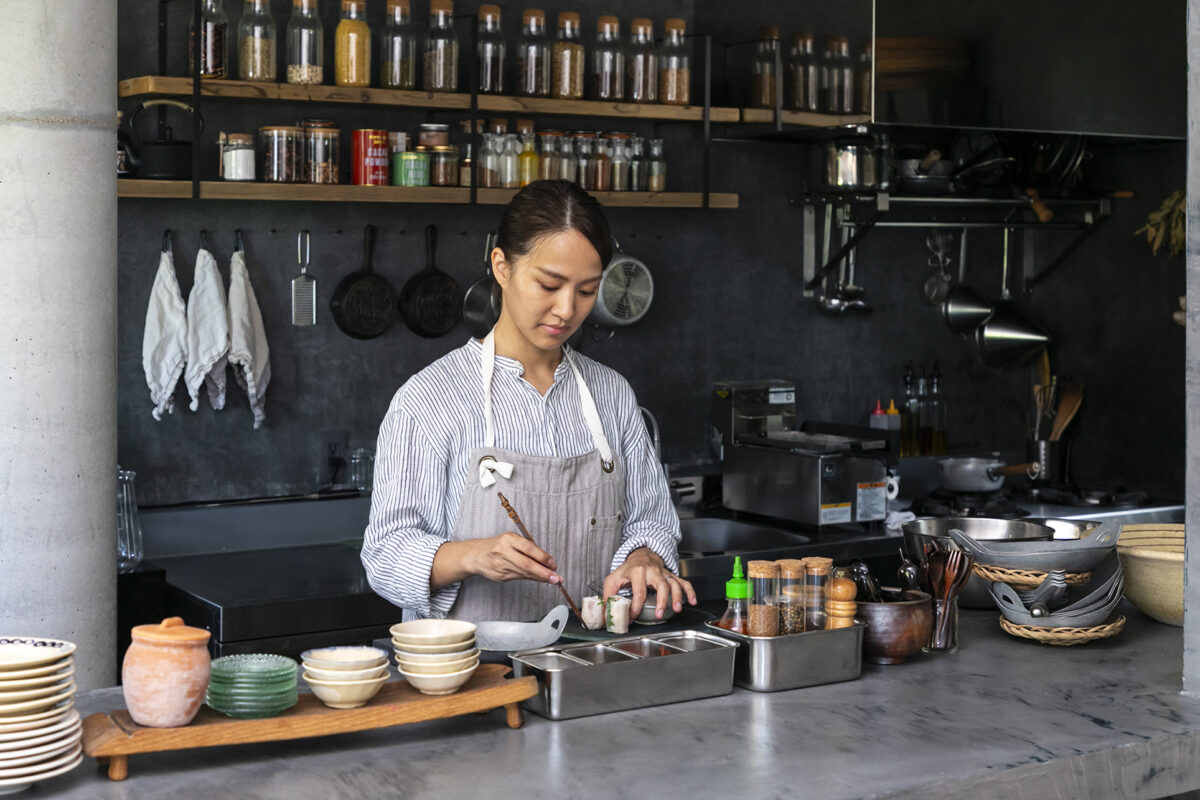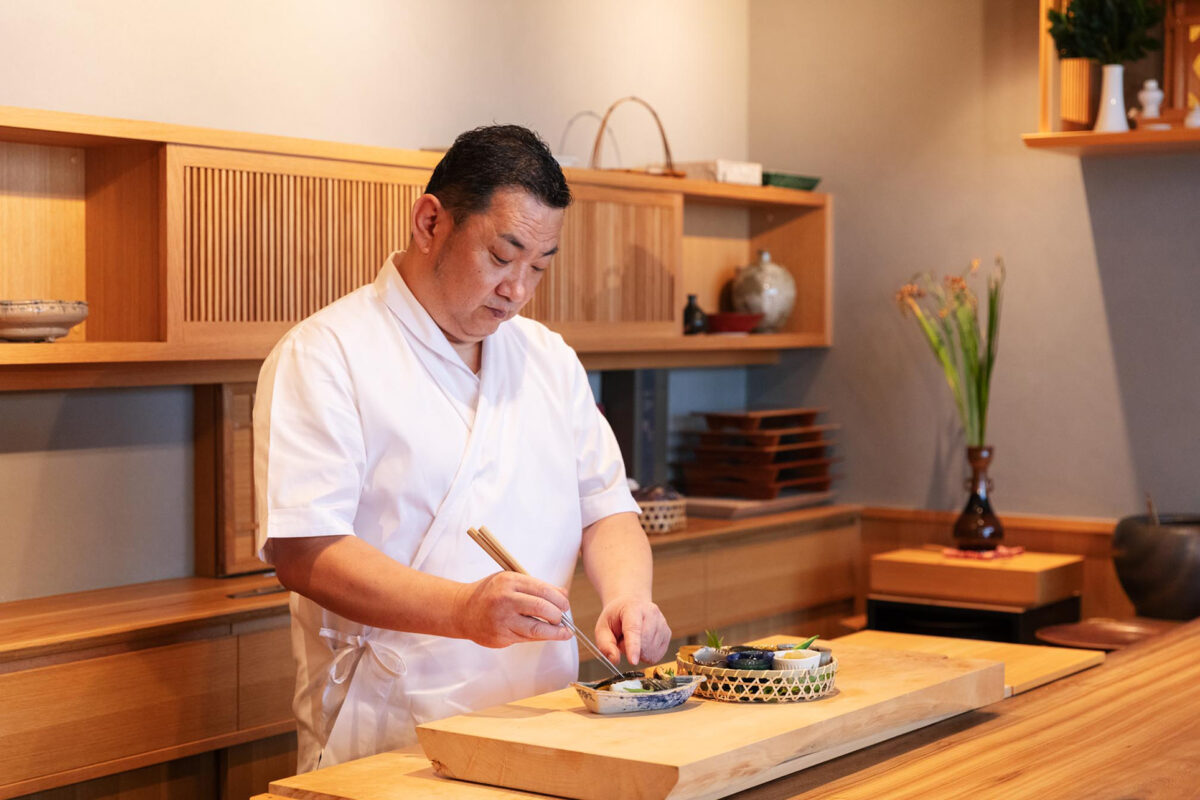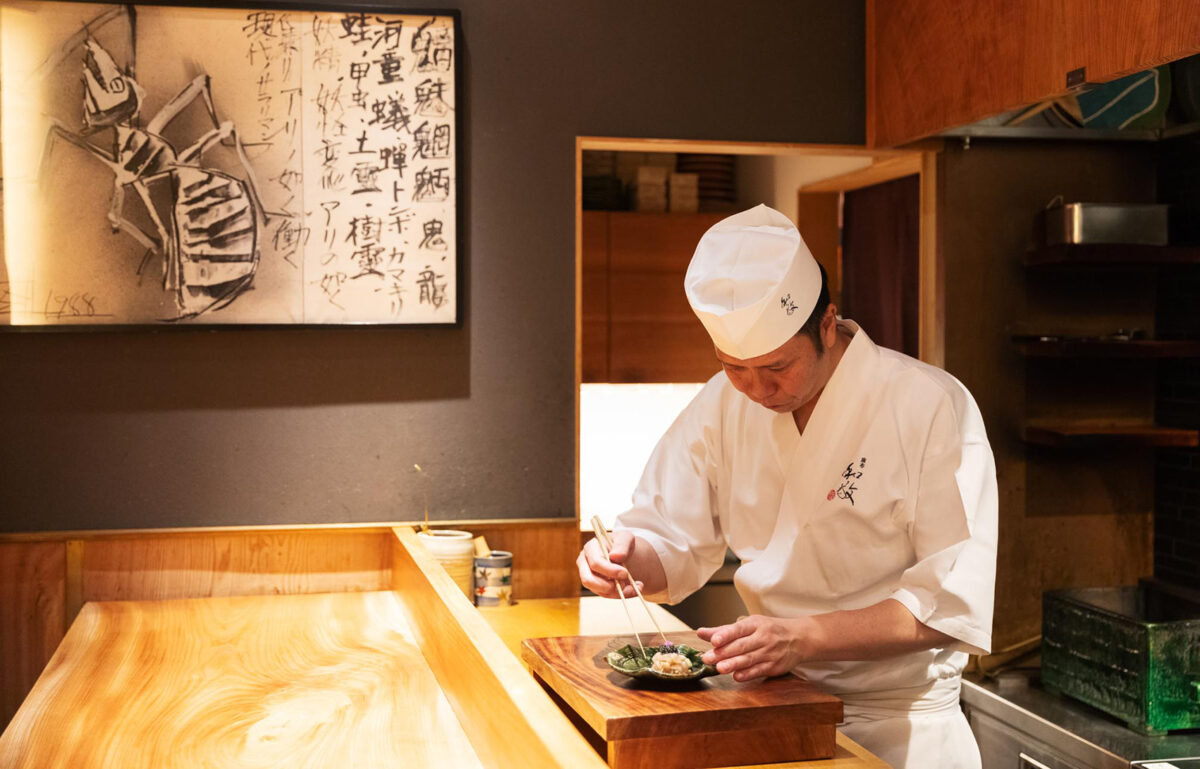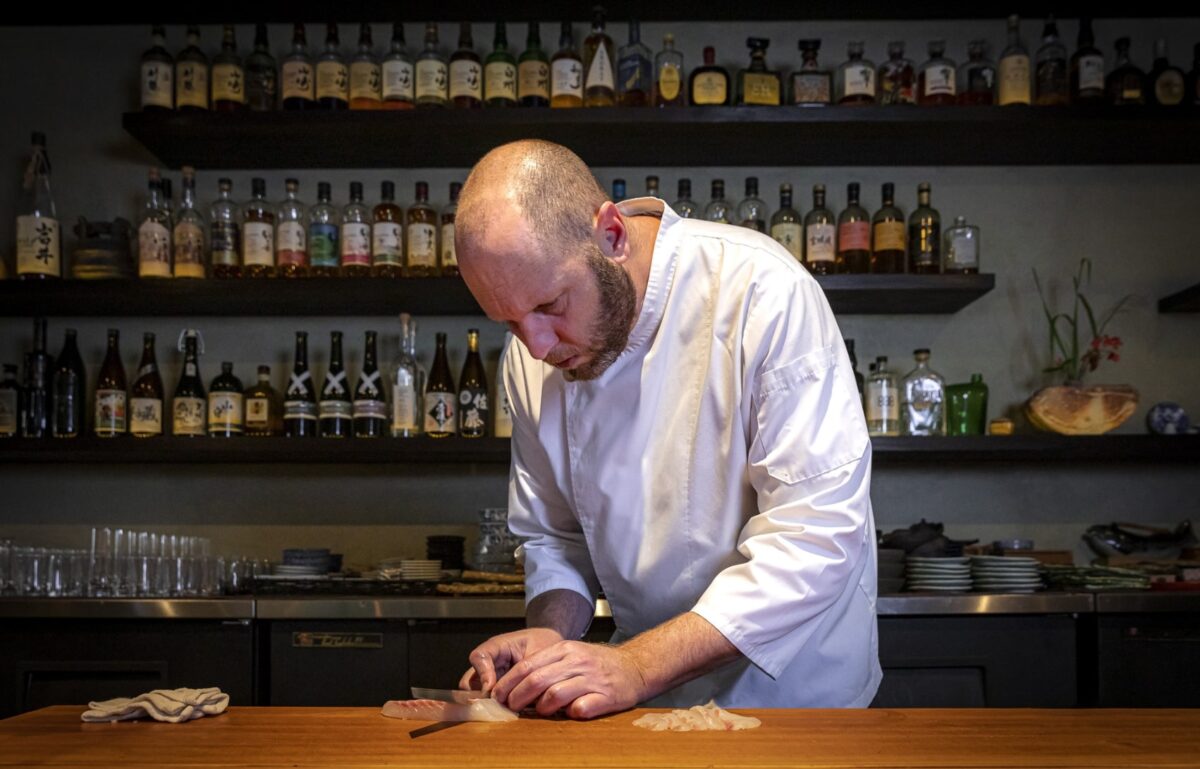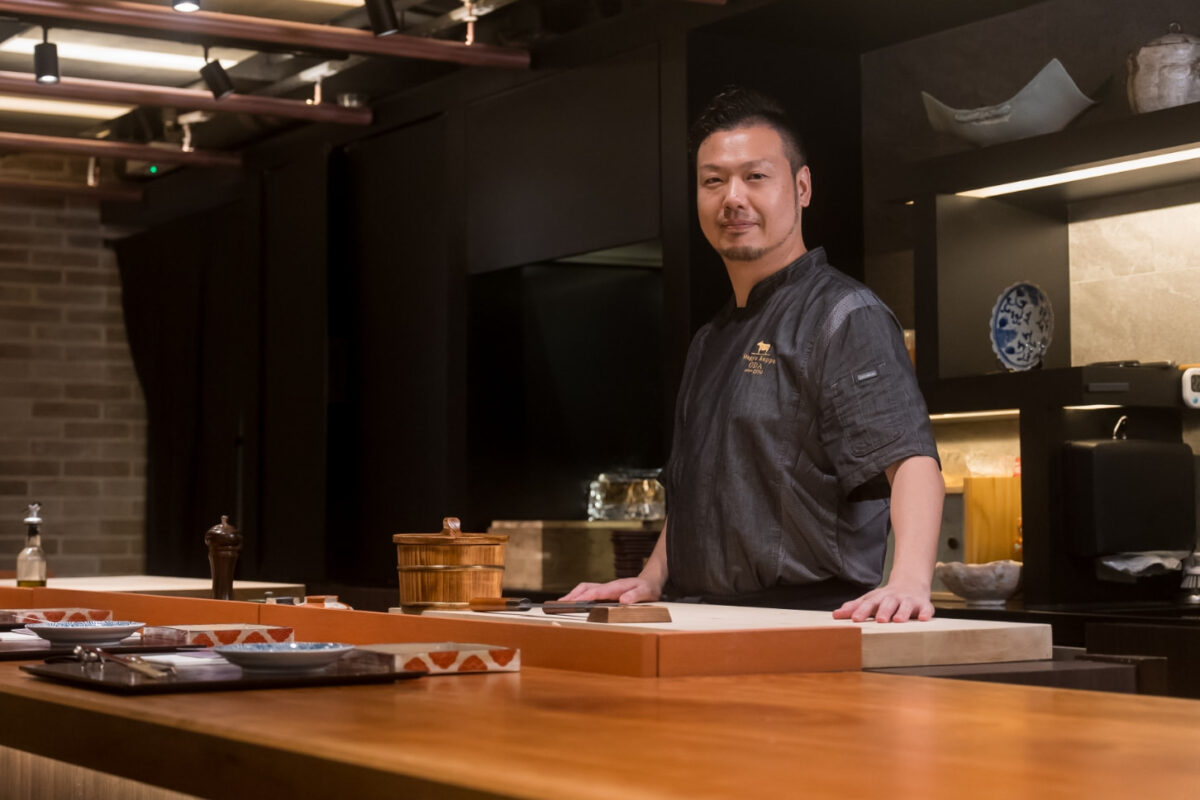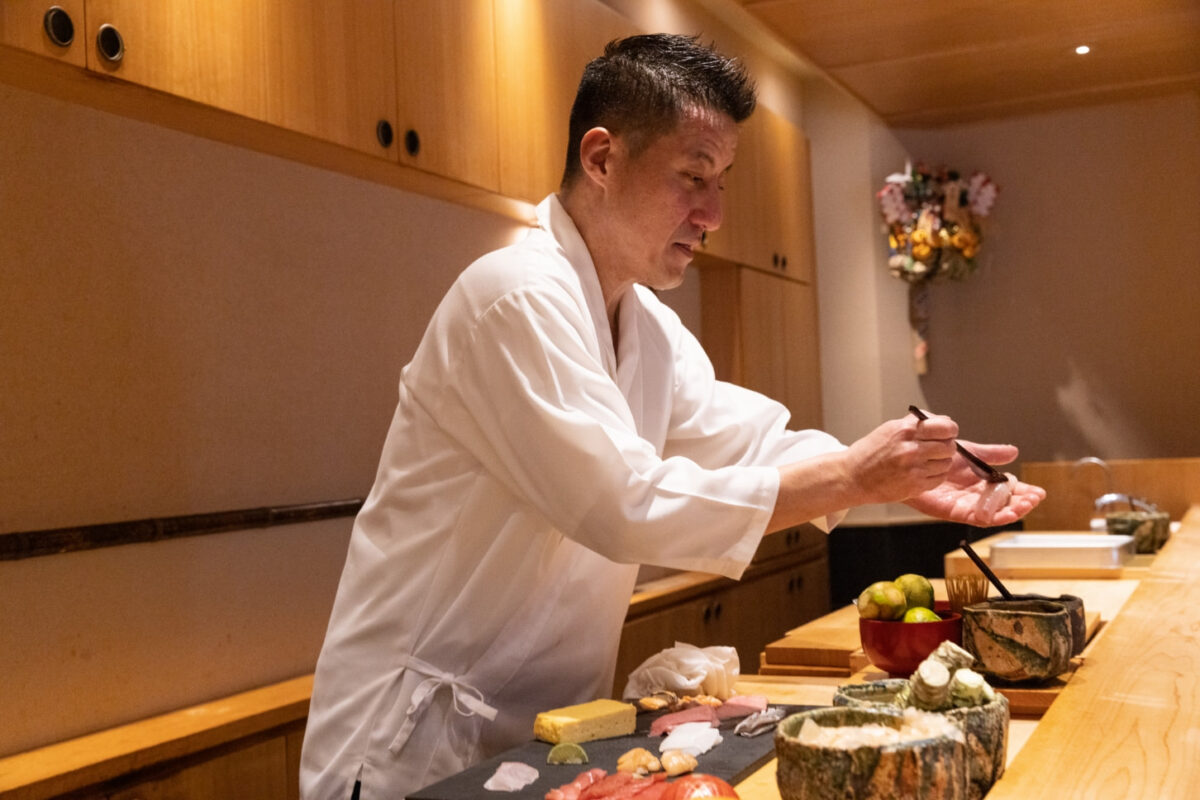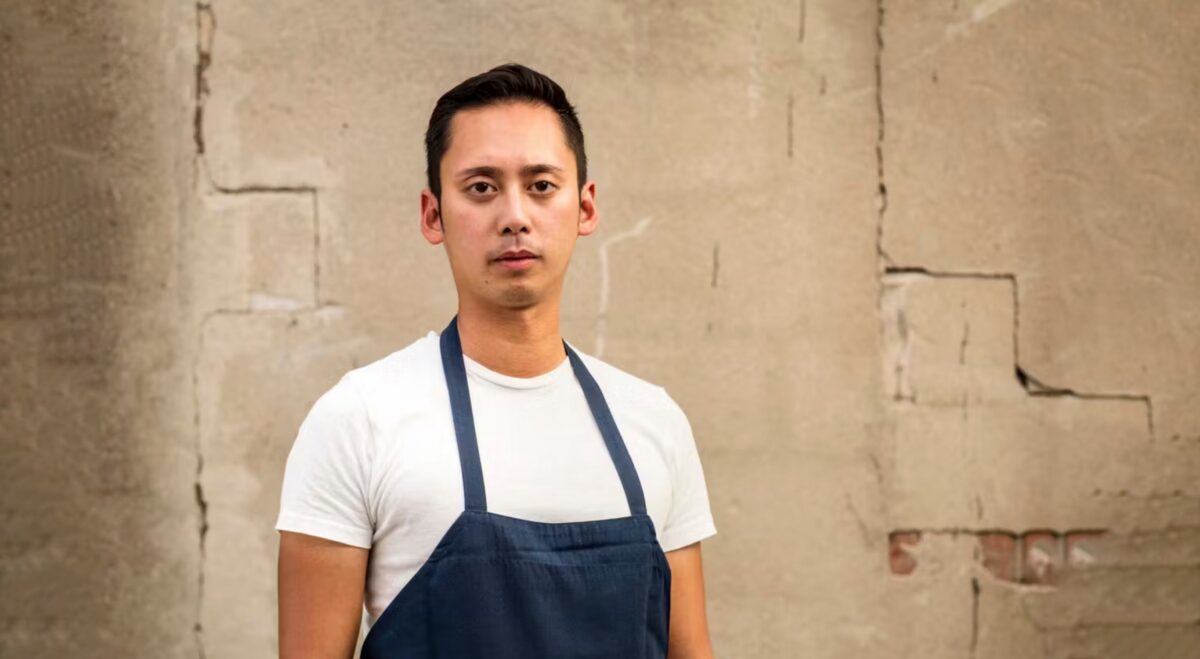Yakuzen Chinese cuisine that soothes the mind and body by highlighting the natural delicious flavors of ingredients
Based on the concept of soothing one’s mind and body, Minamiaoyama Essence is a Chinese restaurant that serves Yakuzen Chinese cuisine prepared in a natural way using carefully selected ingredients. Located on a back street in Minamiaoyama, Tokyo, you can leisurely enjoy great food in a modern space that matches the sophisticated Minamiaoyama neighborhood.
Owner chef Tomohiro Yabuzaki serves Yakuzen Chinese cuisine that soothes the mind and body with fresh, carefully selected seasonal ingredients based on the teachings of tenjingoitsu (unification of God and man), an herbal medicine cuisine approach taught in China. Based on the tenjingoitsu approach, which says that living in a way that adapts to changes in the natural world leads to improved health, Yabuzaki has continued pursuing a method of using no flavor enhancers or chemical seasonings and highlighting the flavors of seasonal ingredients, going so far as to create his own farm in Ashikaga, Tochigi. He grows as many as 200 types of vegetables a year and uses safe seasonal ingredients.
Since receiving the Culinary Masters award in the Ministry of Agriculture, Forestry and Fisheries Chef Award Program, he has been visiting each producer to talk to them directly, ensuring he purchases ingredients from producers who agree with his philosophy on cultivation and breeding. He is very particular about rice as well and has signed an annual contract with a farmer in Ashikaga, Tochigi, who has been growing rice for over two decades. The farmer uses only the Milky Queen variety grown in fields supplied with clean spring water. For the course meal, rice is cooked in single-serving earthenware pots to create a moist and chewy texture and maximize the sweetness and umami flavor.

The death of his mother and meeting with a teacher led Chef Yabuzaki down the road to Yakuzen cuisine
My parents ran a cafeteria in a remote place in Shizuoka and sent me to train with the well-established Saikoh Group of Cantonese food restaurants in Yokohama Chinatown so that I could succeed my father in the family business. However, my mother developed diabetes the following year and passed away, leading me to think deeply about the effects of food on mental and physical health.
I continued training after my mother’s death and the more I studied, the closer I was drawn to the ishokudogen* idea that Chinese cuisine is a balanced diet that leads to a healthy body. Meals prepared for the emperor and imperial court must be healthy. This led me to Yakuzen.
I am currently serving as chairperson for the All Nippon Yakuzen Association, but meeting Kiyotaka Okamoto, the first chairperson of the association who became my Yakuzen teacher, when I was approaching 30 was very important to me. Through events, I was given opportunities to create the Yakuzen recipes that Mr. Okamoto created as a chef, and I continued studying genuine Chinese Yakuzen cuisine.
I graduated from the Saikoh Group in 2007 and launched Minamiaoyama Essence with myself as the head chef. In 2008, I took over the management rights to become the owner chef. Since then, I have been trying to further evolve our Yakuzen Chinese cuisine, for example focusing on wine pairing, creating a more modern interior, and starting to grow fruit, vegetables, and medicinal herbs at my own farm.
*The idea that both treating illness and daily meals are essential for nourishing life and maintaining health, and that the source is therefore the same.

Highlight the natural flavor of in‐season ingredients instead of supplementing what is missing
Rather than focusing too strongly on the ingredients, a major part of Chinese cuisine seems to be making what ingredients you have the most delicious. For this reason, many restaurants supplement what the ingredients are missing with chemical flavoring. I am the opposite and have come to value the essence of each ingredient, for example, how to use Chinese cooking techniques on excellent ingredients to make them taste great. In other words, rather than using seasonings often used in Chinese food to strongly flavor the food, I now strive to make dishes that highlight the flavors of each ingredient. The reason I started growing vegetables on my own farm is also because I wanted to value the ingredients and ensure I have seasonal flavors.
This also applies to the tenjingoitsu approach that I value. In-season ingredients form the basis of Yakuzen cuisine. Many people think that they should eat in-season ingredients because they taste good, but the Yakuzen belief is that in-season ingredients are what our body naturally needs, for example, to cool the heat built up in the body in hot seasons or warm the body in cool seasons. It is important to consider how to make these seasonal ingredients as delicious as possible, and this differs between the start and end of the season. You have to decide not only the cooking method, but also whether to use the ingredient for a main dish or a side dish, and your skill will determine if you are able to maximize the natural benefits of the ingredients during that season.

Delicious Japan Rice that you can eat as is brings out extra umami
Many people think the role of rice in Chinese cuisine is as fried rice or rice porridge. Some may think it does not really matter what kind of rice you use. However, I personally feel that rice should be delicious on its own, and it should also be delicious as fried rice and rice porridge.
The Milky Queen variety I use has a chewy texture, so some chefs may think it is not well-suited for fried rice. However, the chewiness is in the inside and the outside is nice and firm. It does not come apart when cooked as fried rice or rice porridge. In fact, the chewy texture and sweetness bring out extra umami.
I also recommend wine pairing with Yakuzen Chinese cuisine, and some people may find it hard to believe that rice and wine go so well together. The fact is, simply adding one item with Chinese food flavoring can produce a very complex harmony.
Our specialty shrimp miso fried rice with Ashikaga Marc beef pairs well with both rosé and white wine. Ashikaga Marc cattle are raised on feed that contains wine pomace (also known as marc). Once the cattle reach a certain age, their appetite tends to wane, and adding wine pomace increases their appetite and causes fine fat marbling to spread throughout the meat. Adding fermented shrimp miso when frying the rice brings out the flavors of the sauce and the rice, and Milky Queen rice grown in Ashikaga perfectly envelops the flavors.
I am a chef of Chinese cuisine, but as a Japanese person and as a chef with a restaurant in Japan, I feel that it is not the rice that props up the dishes, but rather that the dishes are there to make the rice more delicious.
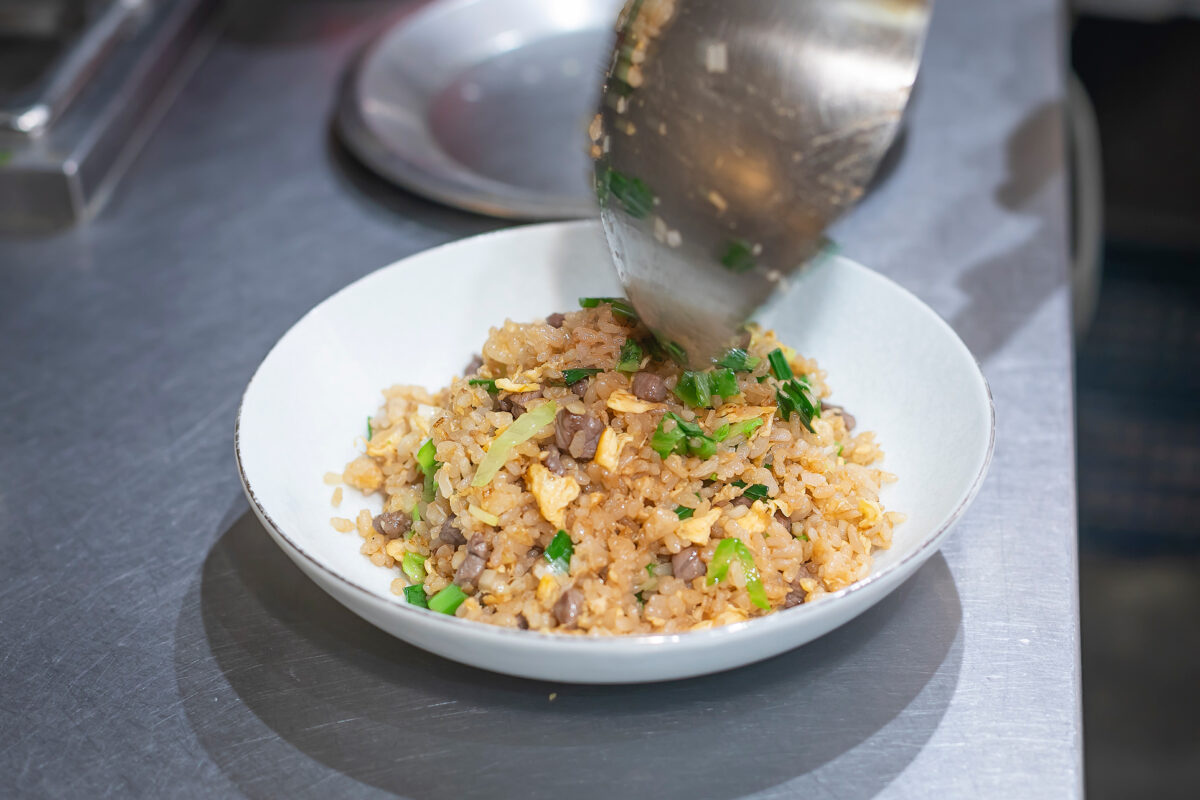
According to the Japanese Shinto view, rice is not just an ingredient, but the roots of Japanese people
I have a qualification for Shinto priesthood in Japan’s traditional Shintoism. From that perspective, rice is actually what forms the core of Japan’s dietary culture. Rice is deeply rooted in the history and lifestyles of Japanese people.
Rice was a gift from a god. When the grandson of Amaterasu Omikami, the sun goddess of Japan, descended to earth, she gave him ears of rice so that the people would not starve. He was told to create a country where the ears of rice would grow well so no one would be without food. Thus, rice is not just an ingredient, but the roots of Japanese people.
Of the offerings made to shrines, rice is at the top, followed by sake (rice wine) made from rice, and rice cakes made from glutinous rice. Japan was probably the only country where taxes were paid in rice. That is just how inseparable rice is from Japanese people.
In such a country, it is natural that we should seriously pursue delicious rice and strive hard to improve the varieties. I think Japan is probably the only country that has evolved rice to this extent. While Japan Rice is delicious when freshly cooked, it is also delicious cold. I have heard that rice balls have recently become popular in other countries too, and I think that a unique feature of the rice grown in Japan is that it is specially created so that it tastes great when it cools too.

The stunning, unspoiled Japanese landscape with ripening rice ears brings out the delicious taste of rice even more
I think most Japanese people have a rice cooker or earthen pot for cooking rice, but it can actually be cooked deliciously by just steaming it in the same way as you would to make chimaki (a rice dumpling wrapped in bamboo leaves) or steamed buns in Chinese cuisine. Of course you can also cook it in a regular pot, and the fact that you can easily cook delicious rice in any cookware is another appealing feature of Japan Rice.
Customers from overseas often have trouble using chopsticks and they tend to like fried rice because they can easily eat it with a spoon. They often find the style of having rice cooked in a single-serving earthen pot with a side dish such as mapo tofu very interesting. They can eat it with a spoon rather than chopsticks, so I encourage them to enjoy different ways of eating rice other than fried rice.
If possible, I earnestly hope that they will visit the rural landscape where rice grows. The stunning scenery of golden rice ears as far as the eye can see will surely move anyone. I am certain that rice eaten after seeing Japan’s unspoiled landscape tastes exquisite.
In addition, from the view of Yakuzen cuisine, rice has the effects of increasing vitality, improving gut health, and improving skin condition. I would love for foreign visitors to experience Japan’s carefully grown rice that looks good, tastes good, and offers good benefits when eaten.
Recommended dish
Shrimp miso fried rice with Ashikaga Marc beef 足利マール牛の海老みそ炒飯
A popular a la carte option, this fried rice is made with marc (grape pomace created in winemaking) from the Coco Farm u0026 Winery in Ashikaga, Tochigi, beef from cattle raised on safe feed that contains two‐rowed barley and soybeans grown in Ashikaga, and fermented shrimp miso. In addition to the shrimp aroma and umami, the unique aroma of the fermented seasoning brings out the flavor of the Milky Queen rice.
